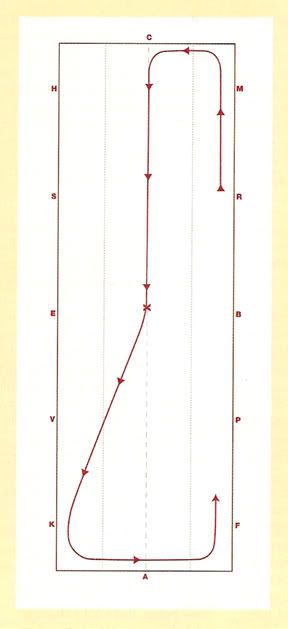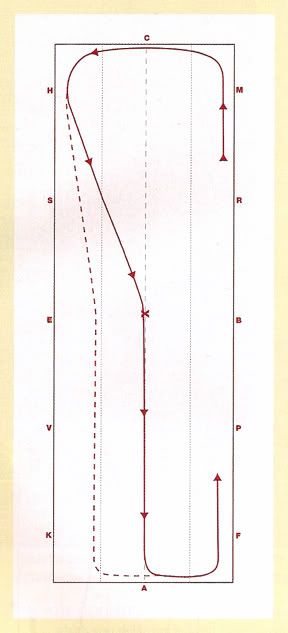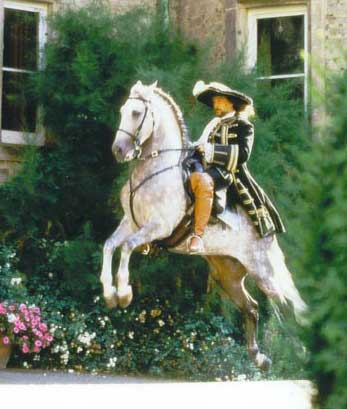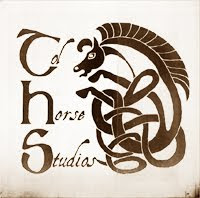I have not posted here since 2011. I hate myself for it. I hate myself for not recording more of the little moments. More of every ride. Horse people take those things for granted; we all do. Everyone close to me will already know everything I will say in this post, and since I'm quite certain no one reads this blog (or will read this blog), it hardly seems worth it to say anything it all. It's been such a long time anyway.
It's easy to just let this blog gather dust and drift from all that is happened. But sometimes it's those nearly insignificant loose ends that, once finally tied off, help us heal the most.
I lost Toler on Friday August 24th of 2013. He was 14. His heart was failing and his kidneys had started to shut down. It was the end of a very long path.
In January of that year, he had developed a cloudy discharge from his nose. We did what any horseowners would do, and the vet started him on antibiotics. When that failed to clear things up in a month, he was referred to the local equine hospital (University of Wisconsin - Madison) to be scoped. He was diagnosed with primary sinusitis and had a hole bored into his sinuses. A stubborn thing to treat, but usually not a big deal. It was a month or two of home care flushing his sinuses through drainage tubes and taking him in for checkups, and around March he had a second hole drilled. Lavage, lavage, lavage, and more checkups. He took it like a champ. Never rubbed his tube, and took the hand-walking regimen in stride. At least it was spring and muddy and icky out, right?
In early April we chased down the possibility of a bad tooth, which proved unfounded, and he was put on a more aggressive treatment. That finally helped and he was able to have his drainage tube removed and return to a semblance of normal life: light turnout, and light work.
We had won a Micklem Bridle, which I had wanted the moment they'd come out, and got to try it on what would become our last ride.
At the end of April, Toler had a fever, refused food, and acted very weak and lethargic. He went back to the horsepital where they found a Grade 4 murmer. After an echocardiogram, they confirmed corrosive endocarditis--bacteria had entered his bloodstream and caused damage to his heart. He had a tear in his aorta.
Many professional equine athletes develop small aorta tears. In itself, if it is small and stabilizes, is not a terminal sentence, or even a career-ending one.
Toler stayed the week in the horsepital under close watch and IV antibiotics to stop the infection and ascertain the damage done. Once discharged, he was allowed to return to the paddock so long as he didn't overdo anything--a game of wait and see with monthly cardio exams.
He spent his birthday at the end of May at home after rocking his cardio check-up. His exams were a marvel of themselves. The vet hospital worked with the human hospital to borrow equipment and a technician to watch and measure his heart. Not many people get to see their horses' heart beating on a screen in such detail like that, to know the exact specifications of their valves. The cooperation between human and animal healthcare was touching, too, and I remember the students and cardiothoracic surgeon from both teaching hospitals crowding into the dark room as quietly as possible to observe. And, so long as Toler had their yummy hay in front of him and pats on his nose, he didn't mind one bit.
For a while we returned to pasture-bound normalcy. We were content with our long grooming sessions, tricks and relaxed wandering in the arena, and hand-grazing around the farm. He got to turn out with his old pasture-mates and they would stand quietly beside him, occasionally trotting and cantering.
We don't know if he got too wound up one day in the paddock; an errant good-feeling buck, or what it was exactly. Sometimes the holes in our hearts just get bigger.
Friday, July 19th, Toler was diagnosed with heart failure. We was admitted once again while they ran tests and settled a treatment program that would buy us a few months.
Sometimes I wish we had taken him home, given him a week to enjoy the sun and grass, and said our goodbyes. It's hard to let go of our soul-mates. I wish I could say that Toler stuffed himself on treats. We see those "last hurrah" pictures of dogs getting cheeseburgers and running down the beach. They build some kind of expectation of what "terminal" is like.
Toler drifted slowly from me. Every day he was further from the moose I knew, the moose who stared up at the sky when the geese flew overhead and trumpeted. The moose who nuzzled his favorite orange kitty. The moose who would sneak down the aisle, carefully pull off the lid of the treat bin and munch as much as possible until discovered.
I brushed him slowly everyday. Used his favorite soft grooma curry on his face. Held his head and sang his favorite song. Every day, one day stolen just for us.
His eyes grew dull and he stopped eating little by little. He hated his medication. Especially the intramuscular injection. I knew it was time when, one Thursday, I went out to get him from the paddock and found him standing with his head low, He didn't even flicker his ears in my direction when I called. The horses wouldn't leave his side. They knew. I collapsed to my knees in the dusty grass and sobbed. I knew, too.
When I took Toler's pulse, each beat resonated in the chambers of his heart separately. So slowly that, at first, it sounded like his heart was racing. We took him on one last trip. We didn't want him buried on land we didn't own. We picked a bucket of long green grass and clover flowers, his favorite red ones. They were the first treats he accepted from us in a month. I sang to him one last time. I told him all the things horses need to hear, scratched under his mane, tucked my body in the niche along his shoulder and foreleg I fit perfectly against. I breathed in his scent and kissed him. He was ready. I was not. I will never be ready, even to this day. His absence is something I feel at all times.
In the end, we rebuild ourselves in any way we can. We become different people. Grief does not pass through us but into us, baking solid. Like yews, our fractured halves do not succumb but grow. In this way, we can carry ruins in our bones.
Someday I hope to own another horse. Hopefully sooner rather than later. I like the thought of a young OTTB. We'll see. I'm not quite there yet. In the meantime, I have the good fortune to be working with a 13 year-old Sweedish Warmblood (with a little Percheron) mare named Britta. So far she's just what I need right now. She reminds me that I still know some things in the saddle. She makes me work for it. We're both rehabbing in our own way. I might start posting about her here, but I'm not sure yet. I might chronicle more about Toler. In the years between posts, we made it through colic surgery and rehabbed our way to schooling 4th level dressage. For now, this is good.
Read more...








